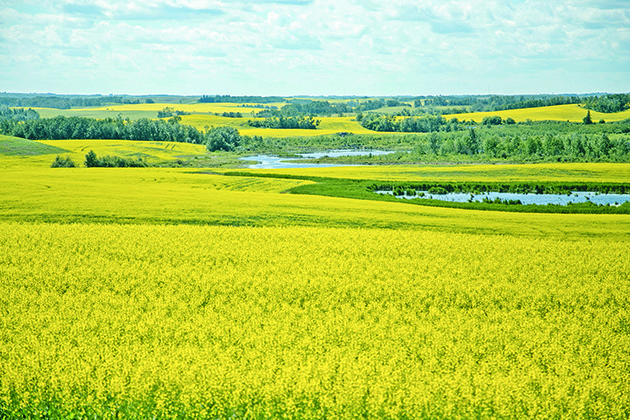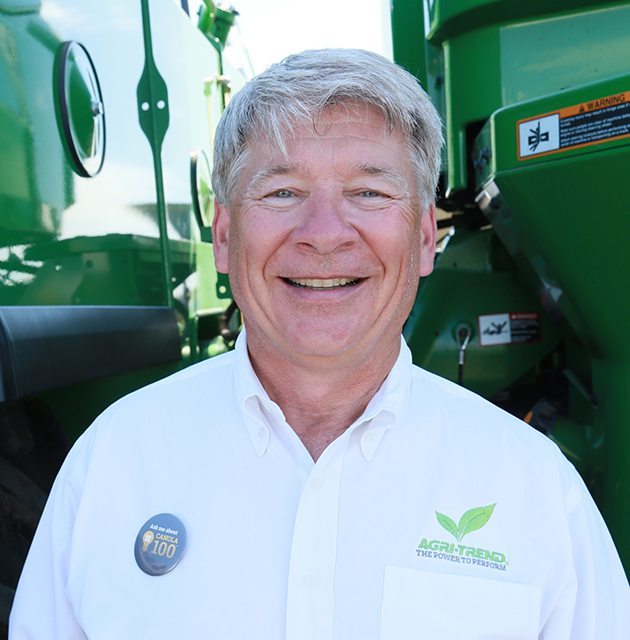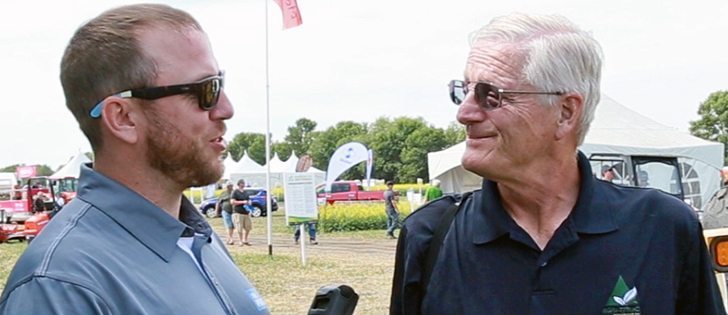Prairie farmers will have to increase their water use efficiency if they are to achieve 100 bushels per acre in dry land canola production, says Phil Thomas of Agri-Trend.
The company recently announced that the first contest in its new Agri-Prize Initiatives will be Canola 100, in which the first farmer to achieve yields of 100 bu. per acre on an non-irrigated 50 acre plot will win the use of a fleet of John Deere equipment for 100 hours per machine, including a tractor, seeder, sprayer, swather and combine.
Thomas, a canola researcher who spoke during last week’s Ag in Motion farm show near Saskatoon, said some canola producers are becoming better at using crop-available water, and 100 bu. per acre has become a realistic goal.
Canola producers achieve an average of three bu. per 25 millimetres of available water, which includes water in the soil profile and rainfall.
However, Thomas said he has clients that yield up to seven bu. per 25 mm of water.
“If you’ve got a soil profile that’s down four feet (1.2 metres) deep, and it’s, say, a silty clay loam, and you’ve got nine inches (23 centimetres) of water in it at the start, the first four (10 cm) go to produce the manufacture base of the plant and the rest goes to yield. Add rainfall on top of that, you’re only looking at seven, eight inches (17 to 20 cm) during the growing season to hit 100 (bu.),” Thomas said.
Read Also

Crop quality looks good this year across Prairies
Crop quality looks real good this year, with the exception of durum.

He said producers are already achieving 80 to 90 bu. per acre with dry land production, and irrigated canola should be targeting 100 bu. per acre. He has seen yields as high 171 bu. per acre in a controlled setting, he added, which proves canola has the genetic capability of reaching the 100 bu. target.
Making all the required plant nutrients available when they’re needed is the key to maximizing crop-available water.
“The biggest factor is fertility,” he said.
“Have a balanced fertility in their diet and away they go. If they are missing one of those ingredients, whether it be a micronutrient or macronutrient, it makes a huge difference on how efficiently they use water.”
Thomas said all the inputs needed to achieve 100 bu. per acre can be applied in a single application with a side or mid row band, and producers won’t have to use advanced efficiency products.
Producers who have a water deficiency in the soil profile when seeding may want to split the fertilizer application because the crop won’t use the plant nutrients without adequate water.
“We can approach it in a two stage approach or a three stage approach,” he said.
“I’ve walked fields where people were looking at it really from a hydroponic standpoint. If I get the rain. I put more nutrients on, if I don’t get the rain I don’t,” Thomas said.
He wouldn’t predict which prairie growing region will first reach the 100 bu. target, but he did say it will need 190 mm of rainfall during the growing season, which lots of areas on the Prairies receive.
The rules for the Canola 100 contest will be available Sept. 15 at agriprize.com.
robin.booker@producer.com, @CdnAg



















